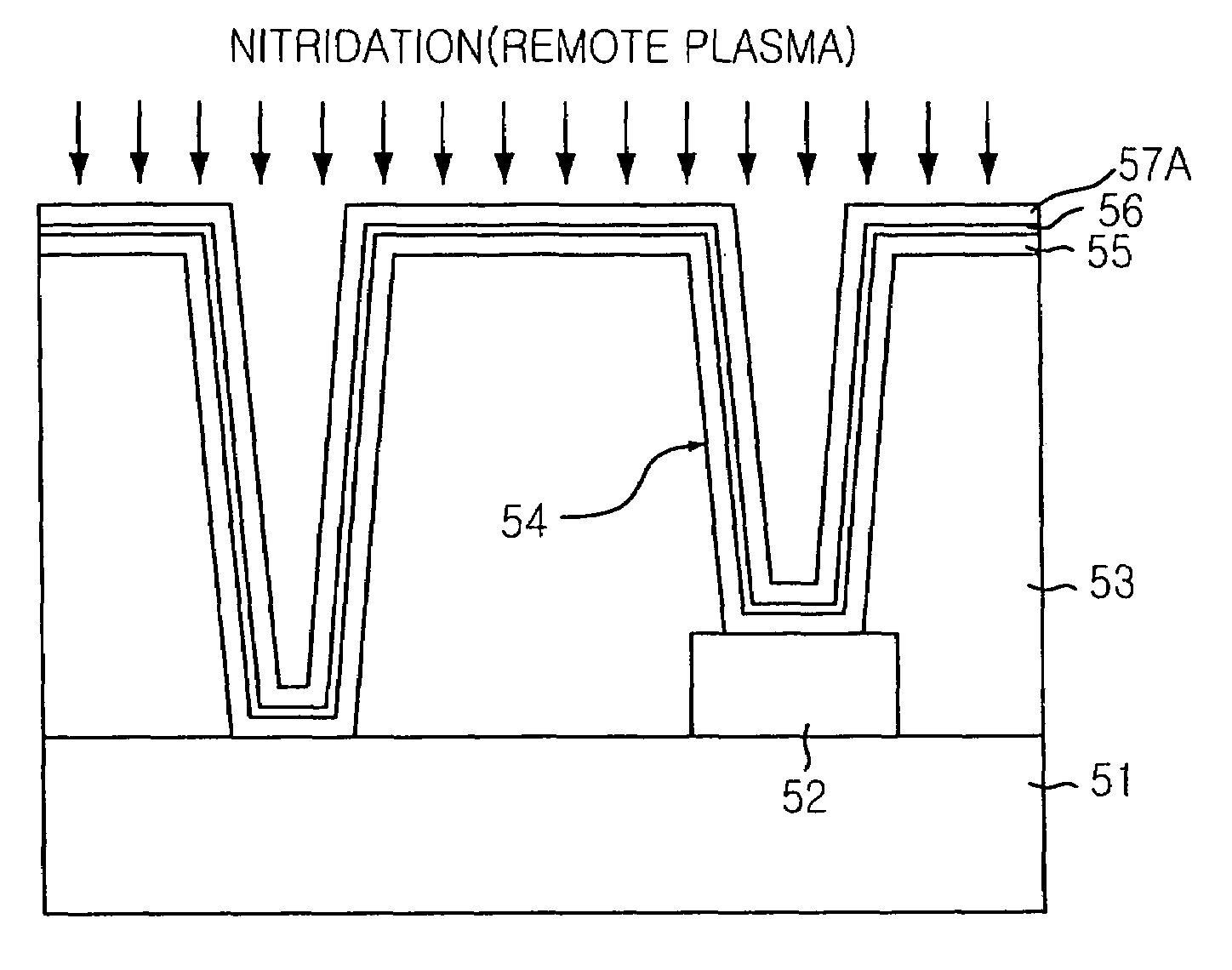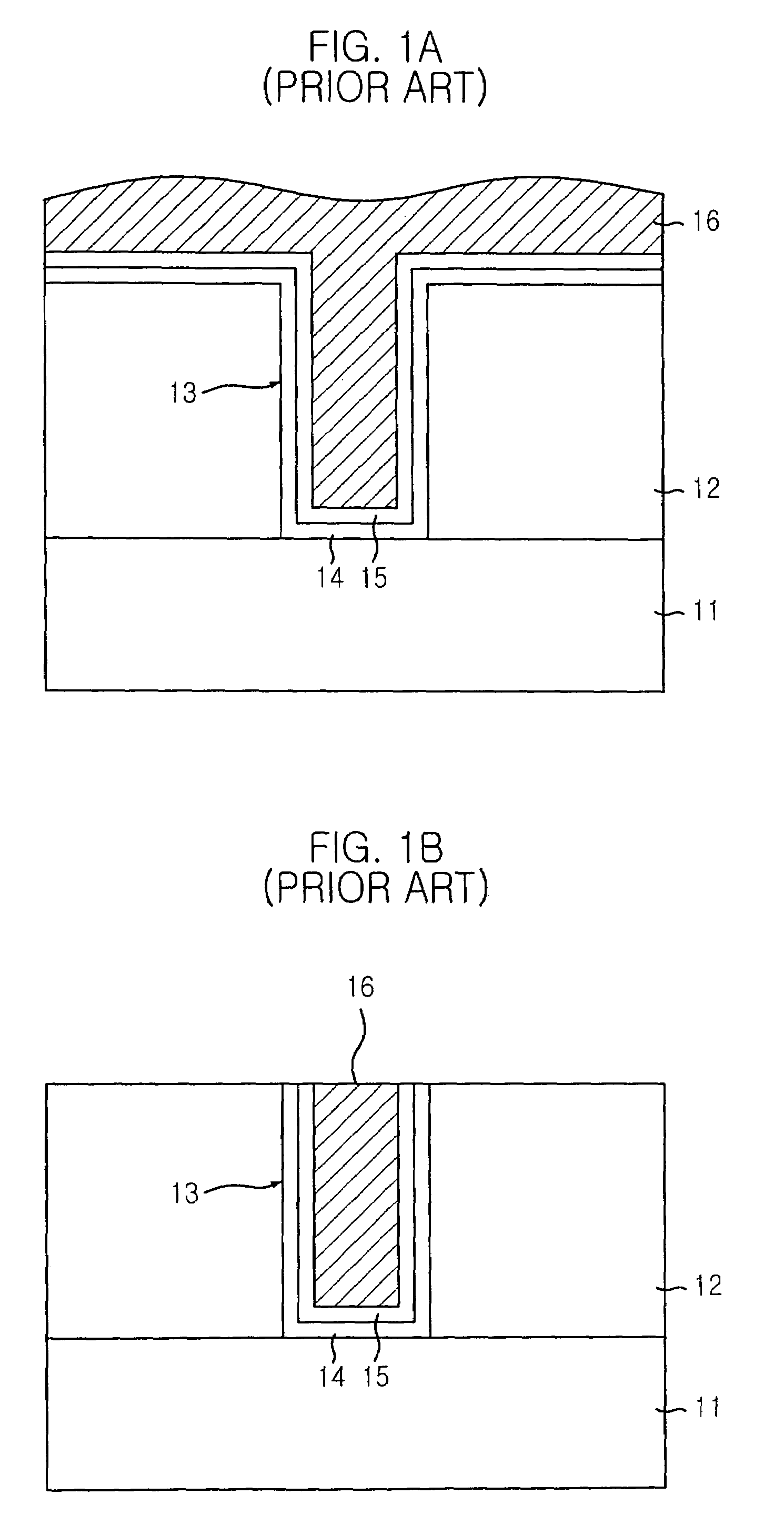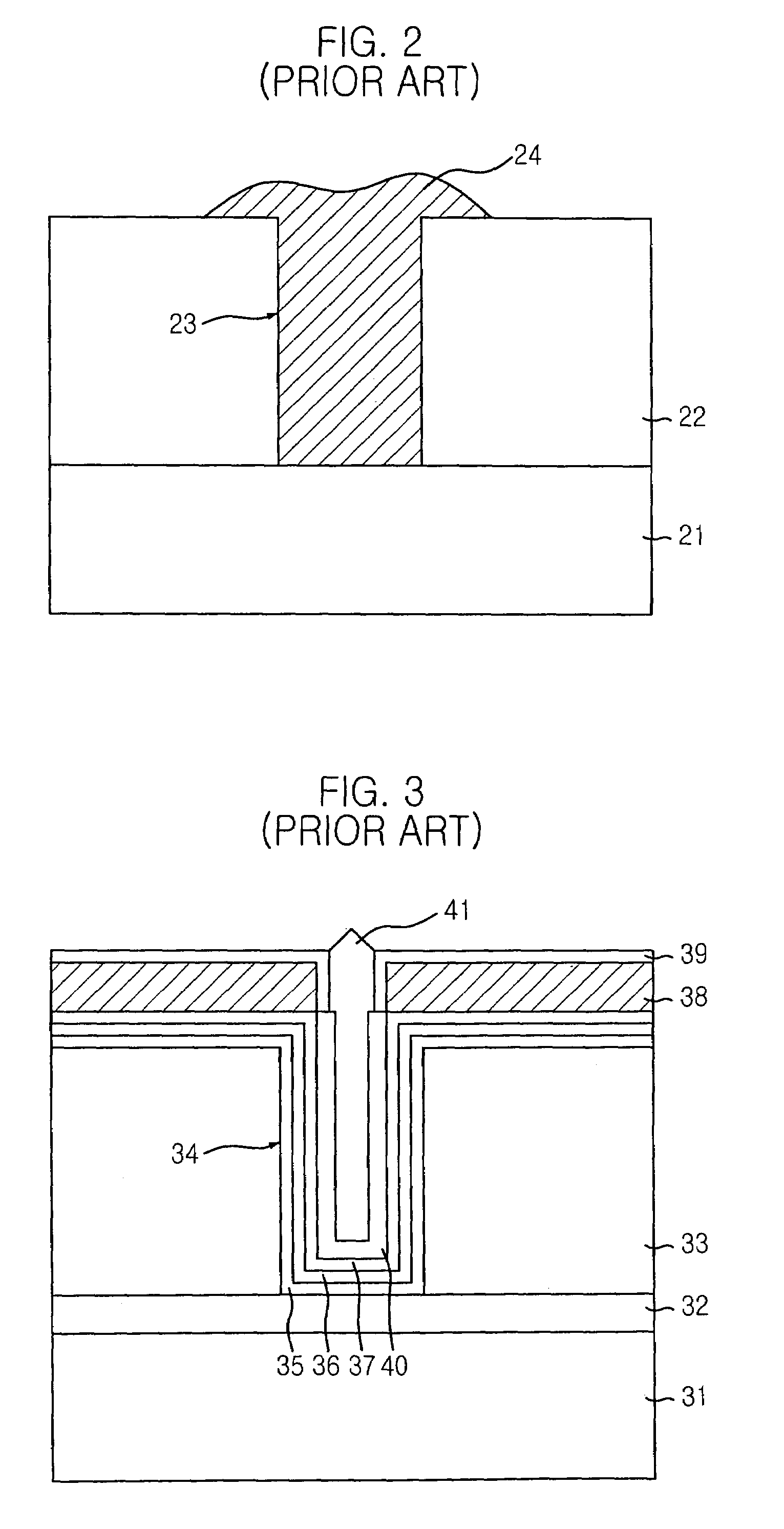Method for fabricating metal interconnection line with use of barrier metal layer formed in low temperature
a technology of barrier metal and metal interconnection line, which is applied in the direction of solid-state devices, basic electric elements, transportation and packaging, etc., can solve the problems of low yield of semiconductor devices, high cost of forming a blanket tungsten layer, and limited use of selective tungsten layer formation methods
- Summary
- Abstract
- Description
- Claims
- Application Information
AI Technical Summary
Benefits of technology
Problems solved by technology
Method used
Image
Examples
first embodiment
[0044]FIGS. 5A to 5G are cross-sectional views illustrating a method for forming a metal interconnection line in accordance with the present invention.
[0045]Referring to FIG. 5A, an insulation layer 53 is formed on a silicon-based substrate 51 provided with a semiconductor device element 52 such as a gate structure or a bit line. Then, the insulation layer 53 is etched by employing a photolithography process and a dry etching process, thereby obtaining contact openings 54 exposing the substrate 41 and semiconductor device element 52. Herein, the contact openings 54 are contact holes or via holes for connecting the semiconductor device element 52 and the silicon-based substrate 51 with a metal interconnection line. As a scale of integration of a semiconductor device has been increased, a height of each contact opening 54 becomes high and a difference in height between the contact openings 54 becomes pronounced.
[0046]After the formation of the contact openings 54, a wet etching proces...
second embodiment
[0082]As shown, being different from the second embodiment wherein the aluminum layer is used to fill contact openings as simultaneously as to form a metal interconnection line, a copper layer 61 is formed on a tungsten nitride layer 57A which is a barrier metal layer by employing a CVD method, and then an anti-reflecting coating layer 59 is formed on the copper layer 61.
[0083]Since copper is highly diffusible, the steps of forming an amorphous silicon layer, forming a tungsten layer and performing a nitridation process to the tungsten layer are repeated in several times to prevent an incidence of copper diffusion caused by thermal energy applied to a substrate 51 during subsequent processes for forming a multi-layered interconnection line structure.
[0084]At this time, a thickness of the tungsten nitride layer 57A or the number of repeating the above sequential steps may vary because of a difference in temperature of the subsequent thermal process depending on an applied semiconduct...
PUM
| Property | Measurement | Unit |
|---|---|---|
| pressure | aaaaa | aaaaa |
| temperature | aaaaa | aaaaa |
| temperature | aaaaa | aaaaa |
Abstract
Description
Claims
Application Information
 Login to View More
Login to View More - R&D
- Intellectual Property
- Life Sciences
- Materials
- Tech Scout
- Unparalleled Data Quality
- Higher Quality Content
- 60% Fewer Hallucinations
Browse by: Latest US Patents, China's latest patents, Technical Efficacy Thesaurus, Application Domain, Technology Topic, Popular Technical Reports.
© 2025 PatSnap. All rights reserved.Legal|Privacy policy|Modern Slavery Act Transparency Statement|Sitemap|About US| Contact US: help@patsnap.com



